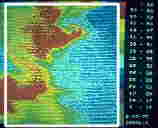 |
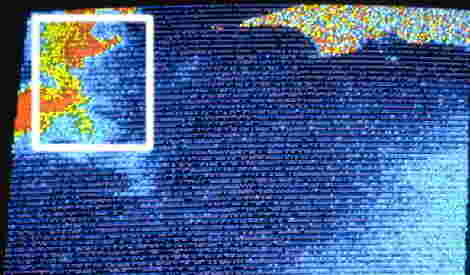 |
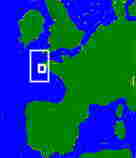 |
| Figure 1: the diagonal of the square corresponds to a length of 40 km | Figure 2: LANDSAT MSS4 2 July 1977 | Location of fig. 2 and 3 |
1 Unidentified Floating Object from LANDSAT : 1978
At LOA (Lille University, France), in order to prepare the analysis of CZCS, we acquired in 1978 two compatible tapes of LANDSAT data over the Ushant Front. This summer thermal front off Brittany was known to generate extremely high concentrations of phytoplankton. By working on these LANDSAT images, we had two objectives: to test our first data visualizing system (designed by L. Gonzalès), and, tentatively, to find some ocean color features along the front. We were not disappointed: the ocean color feature was huge (figure 1). On the computer screen we expected to see only subtle variations, instead we observed a pattern over 20 bits of MSS4 channel (0.5-0.6 micrometer), a variation range observed on the land (figure 2).
 |
 |
 |
| Figure 1: the diagonal of the square corresponds to a length of 40 km | Figure 2: LANDSAT MSS4 2 July 1977 | Location of fig. 2 and 3 |
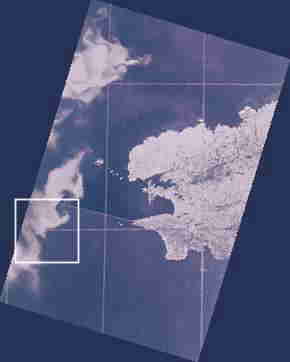 |
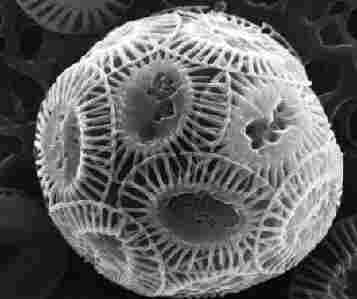 |
| Figure 3: the bloom spreads over 150 km (GDTA- Telespazio with geolocation by J. Le Fevre). |
Figure 4: cell diameter = 6 microns, discernible only by electron microscopy. |
We also ordered full resolution LANDSAT photographic displays of the two scenes (2 and 3 July 1977), and the magnificent marine structure (figure 3) with multiple meanders and eddies appeared. These observations were published in my thesis (1980) as evidence of a major ocean biological event. They were not easy to publish in a scientic review due to the lack of in-situ observations ('sea-truth'). With some colleagues from Brittany Institute (Brest and Roscoff) these LANDSAT observations were finally published by (Le Fevre et al, 1983, Estuarine, Coastal and Shelf Science, 16, 37-5). In this article, for the first time, cocccolithophores (figure 4) were quoted as a possible explanation.
Next page: CZCS
Ehux home page